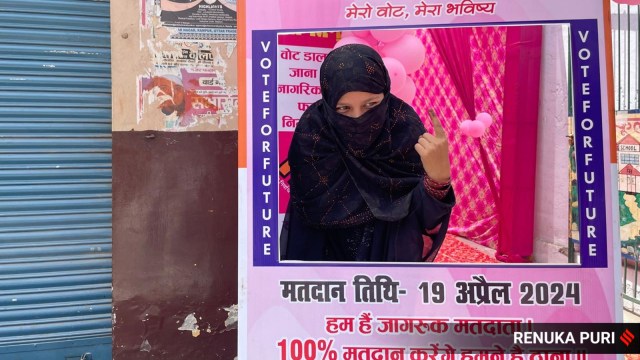
In the first phase of voting on Saturday, around 62 per cent of voters exercised their franchise. The Election Commission expects this figure to go up slightly once the agency has the final data. However, by all accounts, voter presence in the first phase is likely to be less than that of the last general elections.
Prime Minister Narendra Modi has urged people to step out of their homes and “vote for anyone”. He has reportedly even urged the Opposition parties to encourage their supporters to vote. This, he said, was important to secure the future of the country.
Historically, voter turnout has rarely been uniform across the country. According to Election Commission data, more than 80 per cent people exercised their franchise in Andhra Pradesh, West Bengal and most states in the country’s northeast, barring Mizoram and Meghalaya, in the 2019 Lok Sabha elections. At the other end was Bihar, which registered a turnout of around 57 per cent. In the first phase of the polling this year, the state’s turnout figure has fallen.
First time voters
These are still early days for the polling process for 2024. But some figures bear concern, especially the data on first time voters. According to the ECI data, less than 40 per cent of voters between the age of 18 and 19 have registered for the 2024 elections. This seems somewhat difficult to explain. By all accounts, the youth in the country is not apolitical. In today’s social media dominated information ecosystem, young people are exposed to a variety of political voices. Many of them do not hesitate to use the new forms of information channels to define their choices, even protest. As educator Ameeta Mulla Wattal writes (‘Helping the young vote’, IE, April 19) “my interactions with students has led me to believe that they do care — they are passionate about social action, they volunteer in greater numbers than any generation before them. Never before have there been so many youth protests, revivals and pressure groups that have effected change.”
This is also a section of the population that’s critical to the country realising its much-vaunted demographic dividend. As economist Amartya Lahiri points out (‘Clash of aspirations, IE, April 19), “The typical Indian is very young, with the median age being around 28 years. Moreover, India has a very low dependency ratio, with 100 workers for every 40 dependents (those who are too young or too old to be working). India’s low dependency ratio, the young age of its workers, and the anticipated addition of around 10 million new workers annually for the next couple of decades is often described as India’s demographic dividend or boon”.
This, as Lahiri, points out is a double-edged sword. On the one hand, it presents the country with a short window during which it will have a huge supply of young workers and human capital. On the other hand, it presents the country with a severe challenge in matching these workers to productive jobs.
Parties and aspirations
Are political parties alive to the aspirations of youngsters? In its Sankalp Patra, the BJP has promised more earnestness on education, bringing a law to stop cheating in examinations, as well as measures for social justice-based representatives.
The Congress’s Nyaya Patra talks about jobs and governance. The party has promised a right to apprenticeship — every youngster under the age of 25, with at least a diploma degree, can demand a formal one-year apprenticeship and the government will be obliged to provide one with either a private or public sector entity, along with an annual stipend of one lakh rupees. The government and the employer will share the expense of this stipend. As political scientist Hilal Ahmed points out (Battle of ideas, April 19), addressing economic inequality is the central theme of the party’s Nyay Patra.
As Ahmed says, an interesting battle of ideas has begun, which “will shape the future trajectories of our democracy”.
Whichever party comes to office – and even the ones that don’t — should do well to join the dots. Of course, this should be about the reception to their manifestoes and ideologies. But parties should also try to read how young voters have marked their presence – or absence – at the hustings.
Till next time
Kaushik


